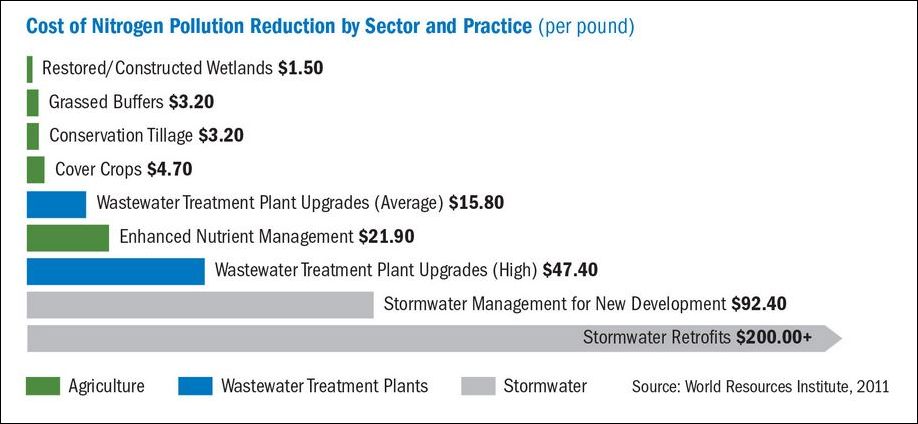The health of the Chesapeake Bay continues to improve but is still “dangerously out of balance,” declared the Chesapeake Bay Foundation (CFB) in its 2014 State of the Bay report. The goods news is that bay waters were notably cleaner and the oyster population rebounded last year. The bad news is that algae blooms, deoxygenation of the water and sunlight-blocking sediment were still big problems. Losses in the blue crab and rockfish populations were particularly disheartening.
Overall, I think society has struck the right balance toward saving the bay. The fact is, Virginia faces many challenges and scarce resources to devote to them. We cannot afford to spend as much money fixing the bay as the job requires. On the other hand, we can’t let our commitment slip. The Chesapeake Bay is a national treasure and we must restore it. The course we’ve chosen — slowly but steadily ratcheting up standards to reduce pollution and foster the recovery of key species over time — seems appropriate.
The imposition of new storm water regulations in 2014 means that Virginians will continue to pay more in the years ahead, although much of the expense may be hidden in the cost of real estate development/redevelopment. What strikes me is that different methods of reducing nitrogen pollution vary so markedly in the cost per pound. Restoring or constructing wetlands costs $1.50 per pound of nitrogen pollution reduced, according to the CFB graphic above, while stormwater retrofits to hard infrastructure can cost up to $200 per pound saved.
Surely, there must be some way politically to channel more effort into wetlands construction ($1.50 per pound), creating vegetative buffers to farmlands ($3.20 per pound), implementing conservation tillage ($3.20 per pound) and planting cover crops ($4.70 per pound) rather than paying for massively expensive stormwater retrofits. Go for the low-hanging fruit first. Only if that doesn’t do the job, move up the scale to increasingly expensive solutions.
— JAB



